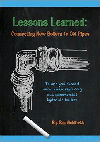Combating new competition

Home Depot’s acquisition of Interline Brands willcreate more competition for traditional PHCP and HVAC supply houses, but less competition for PVF distributors.
Interline companies sell to the same kinds of professional contractors and end users that PHCP, HVAC and PVF distributors do. Additional competition is coming from Amazon Business, the replacement for Amazon Supply (but no PVF), Alibaba (where some products are sold in small quantities) and Grainger. Less competition is coming from MSC Industrial Supply (a small selection) and McMaster-Carr (a small selection of plumbing, no HVAC equipment or pipe). Not threatening are HD Supply, Kaman Industrial Technologies and WESCO.
Competing with the giants will require better inventory management and a high level of warehouse accuracy, both addressed here.
Inventory management
A previous article described how to develop a long-range plan to sell slower-moving yet profitable stocked products in order to replace revenue lost because the giants have decreased the prices of commodity products. Planning should also consider new product lines and stocking non-stock products. Regardless of the product mix, tighter inventory management is needed because the giants are sophisticated inventory managers. A few ideas for tighter inventory management are:
Lead timesfor new stocked products should be set manually, because initially there is no history to use in calculations; after 12 months of history, for frequently purchased products, change to computer-calculated lead times.
The min/max method of inventory management should be used for new stocked products and those that move very slowly; after 12 months of history, for faster-moving products, change to the EOQ method of inventory management.
Safety stocklevels for new stocked products should initially be set to zero; after 12 months of history, for the faster-moving products, change to computer-calculated safety stock (using the highest possible levels of planned customer service).
Before converting a line-buy report (suggested PO) into a PO, buyers should examine data underlying each suggested purchase quantity looking for events that could have distorted the quantity.
The report of sales of non-stock products used to make stocking decisions should identify each customer and that information used to determine if each customer will still be a customer in the near future.
If factory direct-ship purchases are accidentally received into inventory instead of delivered to a jobsite, inventory data must be adjusted or the purchasing system will, for the next PO, suggest buying more than needed.
After a physical count, before a quantity on hand is changed, the person responsible for data maintenance should examine the inventory transaction history of the item, its sales order data and all warehouse areas.
Warehouse accuracy
The giants have a delivery accuracy rate in excess of 99.99%, so it is important to determine if a warehouse is arranged and operates in ways that result in very few mistakes that impact customers. Some ideas for increasing accuracy in the warehouse are:
Store large, heavy products on the lowest rack or on the floor. In terms of slot location, if more than one product is stored on the same shelf, location codes should contain the identification of each usable location.
If a unit of measure in displayed PO data or on a put-away list is not the same as that on the corresponding packing list, the person doing the receiving should note that discrepancy on the packing list. During put-away, all cartons should be put away with the label or item bar code facing toward the aisle.
Pickers should never be required to use a calculator to determine the quantity to pick – it should be shown on the pick ticket. An order checker should not be the same person who picked the order being checked. During order packing, the checker should compare the product code of each line on the pick ticket against the content of each box or label.
These ideas are a good starting point for traditional distributors who want to improve customer service regardless of new competition.
Looking for a reprint of this article?
From high-res PDFs to custom plaques, order your copy today!








